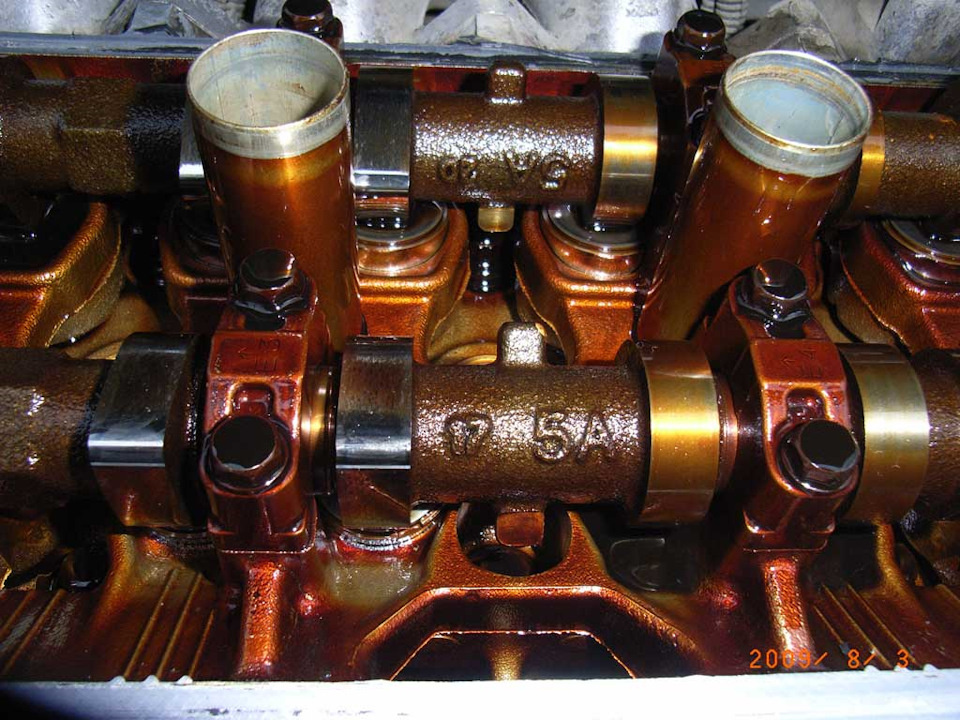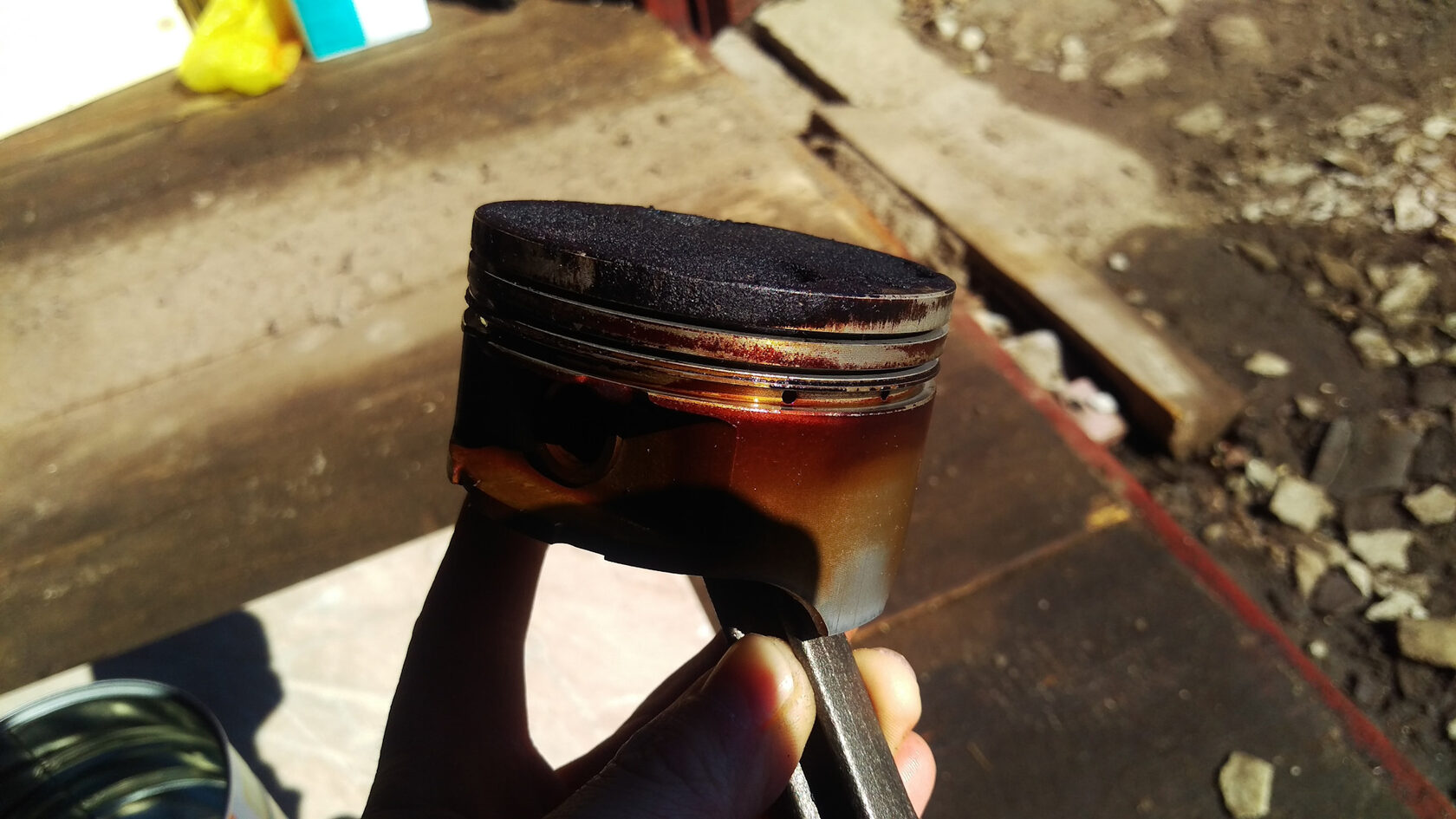It's good when a car is covered with a strong layer of lacquer. It's good when the lacquer is on the outside of the car and not on the inside. Inside? And what happens?
Engineers are well aware of such a phenomenon as lacquer deposits in the engine. Moreover, it is quite difficult to remove lacquer deposits from inside the engine.
Engineers are well aware of such a phenomenon as lacquer deposits in the engine. Moreover, it is quite difficult to remove lacquer deposits from inside the engine.

Where do lacquer deposits in the engine come from and how dangerous are they, we will tell you now.
The main reason for the appearance of lacquer is always the oil in your engine.
Let's start with the fact that modern engines can be heavily loaded (especially turbocharged units). Local overheating can occur in some parts of the engine, because the walls are thin and quickly warm up - some of the oil in such places can harden and remain on the surfaces in the form of red varnish.
But the biggest reason is when you "roll" the oil or fill it with low-quality oil. In urban use, closer to 10,000 km of mileage, the oil loses more than a third or even half of its properties.
No matter how good it is, the cleaning and dispersing properties deteriorate. The oil begins to oxidize and settle in the form of lacquer on all parts of the engine inside. And if the oil is of poor quality, for example - it has bad additives that wear out quickly, the lacquer will very quickly appear on the surfaces of the engine. Even with low mileage.
How dangerous are lacquer deposits in the engine?
Such deposits do not bring anything good. First of all, they interfere with normal cooling. But the greatest danger is lacquer deposits on the pistons and rings of the engine. lacquer settles on the pistons and rings, leading to their coking. And this is a direct path to scoring in the engine cylinders. The engine's valve timing mechanism, especially the hydraulic compensators, can also suffer.
The main reason for the appearance of lacquer is always the oil in your engine.
Let's start with the fact that modern engines can be heavily loaded (especially turbocharged units). Local overheating can occur in some parts of the engine, because the walls are thin and quickly warm up - some of the oil in such places can harden and remain on the surfaces in the form of red varnish.
But the biggest reason is when you "roll" the oil or fill it with low-quality oil. In urban use, closer to 10,000 km of mileage, the oil loses more than a third or even half of its properties.
No matter how good it is, the cleaning and dispersing properties deteriorate. The oil begins to oxidize and settle in the form of lacquer on all parts of the engine inside. And if the oil is of poor quality, for example - it has bad additives that wear out quickly, the lacquer will very quickly appear on the surfaces of the engine. Even with low mileage.
How dangerous are lacquer deposits in the engine?
Such deposits do not bring anything good. First of all, they interfere with normal cooling. But the greatest danger is lacquer deposits on the pistons and rings of the engine. lacquer settles on the pistons and rings, leading to their coking. And this is a direct path to scoring in the engine cylinders. The engine's valve timing mechanism, especially the hydraulic compensators, can also suffer.

How to remove it and is it possible?
Of course, you can wash off all these deposits, purely physically. But if you imagine the scope of work, from dismantling the unit and disassembling it, and then, accordingly, you will need to do everything in reverse order, then this is a very expensive method.
You can add detergents when changing the oil. So that the engine works with them for several minutes. However, almost all "five-minute" ones are quite aggressive, and it is not clear how they affect the seals, the paint of the pan, etc.
Probably, the simplest solution is to pour in a good proven oil with excellent detergents. Moreover, change it after 5000 - 7500 km, then the engine inside will be simply ideal.
There is an interesting remark here regarding the owners of used cars, especially with a mileage of more than 200 thousand km. Many after such a mileage begin to "save", i.e. change oils less often and pour in what is cheaper and as a result end up in engine repairs. In such a case, you can often hear that the engine is overhauled already at 200 - 250 thousand km of run, but with the right lubricants, the resource can be significantly extended.
Lubrisynt motor oils from Lubrifilm are a high-tech and innovative product developed by the Swiss company Actex for the most optimal protection of the car engine, including from lacquer deposits. LUBRISYNT motor oil can withstand very significant loads. In comparison with other oils, it can withstand significantly greater forces on the rupture of the oil film, up to 18 kg. And also during use, the oil does not coke or burn off, which is especially important for air-cooled and turbocharged engines. LUBRISYNT oils. This is a top base, the best PAO (Polyalphaolefins - synthetics of group 4 from gas instead of hydrocracking) and Ester (Esters). More expensive additives and viscosity stabilizers. Lubrisynt oil:
For this reason, we fill in Lubrisint oil and operate the car to the fullest, without fear of dynamic driving in the heat. After all, the engine is maximally protected from wear.
Lubrifilm also has innovative oils with microceramics based on Boron Nitrite - "Bortec". Which is acceptable for any type of engine, with the absence of microparticles and ash. A non-drip high-temperature (up to 1200C!) oil film is formed on the lubricated surfaces, which will protect any engine from overheating and wear. It is well known that Boron Nitride prolongs the efficiency of the oil package additives up to 3 times! This means that you will not have to change the oil as before at 5,000 km, as experienced mechanics advise, but without losing quality, drive an interval of at least 15,000 km!
More about Lubrifilm technology
Of course, you can wash off all these deposits, purely physically. But if you imagine the scope of work, from dismantling the unit and disassembling it, and then, accordingly, you will need to do everything in reverse order, then this is a very expensive method.
You can add detergents when changing the oil. So that the engine works with them for several minutes. However, almost all "five-minute" ones are quite aggressive, and it is not clear how they affect the seals, the paint of the pan, etc.
Probably, the simplest solution is to pour in a good proven oil with excellent detergents. Moreover, change it after 5000 - 7500 km, then the engine inside will be simply ideal.
There is an interesting remark here regarding the owners of used cars, especially with a mileage of more than 200 thousand km. Many after such a mileage begin to "save", i.e. change oils less often and pour in what is cheaper and as a result end up in engine repairs. In such a case, you can often hear that the engine is overhauled already at 200 - 250 thousand km of run, but with the right lubricants, the resource can be significantly extended.
Lubrisynt motor oils from Lubrifilm are a high-tech and innovative product developed by the Swiss company Actex for the most optimal protection of the car engine, including from lacquer deposits. LUBRISYNT motor oil can withstand very significant loads. In comparison with other oils, it can withstand significantly greater forces on the rupture of the oil film, up to 18 kg. And also during use, the oil does not coke or burn off, which is especially important for air-cooled and turbocharged engines. LUBRISYNT oils. This is a top base, the best PAO (Polyalphaolefins - synthetics of group 4 from gas instead of hydrocracking) and Ester (Esters). More expensive additives and viscosity stabilizers. Lubrisynt oil:
- Helps slow down the aging process of your engine
- Improved protection against oxidation and wear
- It has very good cleaning ability.
- Fast cold engine start
- Minimizes oil burnout
- Improves the performance of gaskets and seals, preventing oil leaks.
For this reason, we fill in Lubrisint oil and operate the car to the fullest, without fear of dynamic driving in the heat. After all, the engine is maximally protected from wear.
Lubrifilm also has innovative oils with microceramics based on Boron Nitrite - "Bortec". Which is acceptable for any type of engine, with the absence of microparticles and ash. A non-drip high-temperature (up to 1200C!) oil film is formed on the lubricated surfaces, which will protect any engine from overheating and wear. It is well known that Boron Nitride prolongs the efficiency of the oil package additives up to 3 times! This means that you will not have to change the oil as before at 5,000 km, as experienced mechanics advise, but without losing quality, drive an interval of at least 15,000 km!
More about Lubrifilm technology
